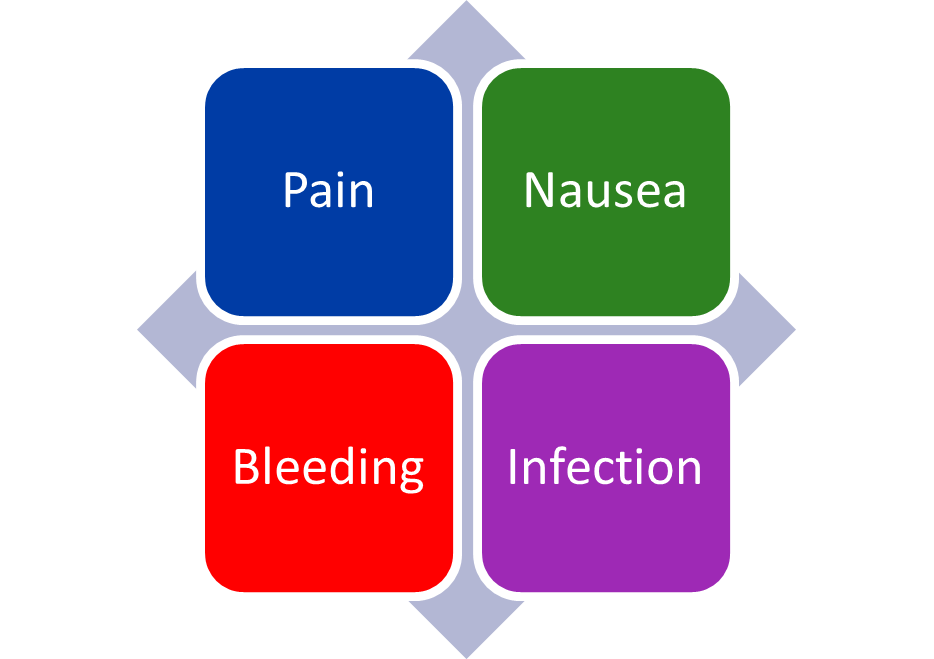Subcutaneous Implantable Defibrillator (S-ICD)
Wound Care
• Your incision is closed with either surgical tape, staples or a surgical glue called. There are two areas: one incision is on your left side and the other incision is a small area at the bottom of your sternum)
§ It is important not to scrub, rub, or pick at the site
After 3 days, you may shower
§ Use mild soap and gentle water stream, then pat dry with a towel
§ Do not apply lotions, powders, ointments, or perfumes to the incision
• Do not soak your incisional site in water for 4-6 weeks (no baths, swimming, hot tub…)
• If surgical tape was used do not remove the strips they will fall off on their own
• If surgical glue was used, the glue will naturally fall off within 3 weeks
• If staples were used, they will be removed in 7-10 days
Activity
• For 4 weeks after your procedure
§ Do not lift anything more than 10 pounds such as a gallon of milk
• Do not drive until your EP doctor or nurse practitioner/physician assistant states it is safe to drive
• A follow-up appointment with your EP doctor or NP will be made for you in 7-14 days after discharge prior to leaving the hospital
Medication
• Please take your medications as explained to you (found on your discharge paperwork)
• If you have discomfort or soreness, take pain medication (over-the-counter) as explained at discharge
Diet
• Follow the heart healthy diet recommended by your doctor
• If you smoke, we recommend you quit. It will immediately improve your health
§ If you would like to let us help you live smoke-free, call the Center for Tobacco Control at (516) 466-1980
Side Effects
Pain
• You may have pain after your surgery at the incision site.
• Take pain medication as directed by your doctor
• Call your doctor if your pain is not getting better within 5 days or if it gets worse
• Prescription pain medication should be taken with food, and can cause constipation; an over-the-counter stool softener may be helpful
Nausea
• Anesthesia can upset your stomach
• Eat bland foods (Jell-O, crackers, toast) and drink ginger ale if you are nauseous
• Drink plenty of fluids, such as water or ginger ale
• If your have nausea or vomiting the day after your surgery or procedure, call your doctor
Bleeding
• You may have a small amount of oozing and bruising from your surgical site, this is normal.
• Excessive bleeding at the site can be dangerous and should prompt immediate medical attention
Infection
• If you have any of the following signs of infection, call your doctor
§ Redness, swelling, fever over 101 degrees, thick yellow/white drainage
Living with your Defibrillator
• Carry your device ID Card with you AT ALL TIMES
• If you notice swelling, redness, discharge/oozing or skin breakdown at the defibrillator site, contact the clinic. Do not allow your PCP or ER physician to aspirate or stitch/glue the site.
• If you experience a single shock (patients describe it as being kicked/punched in the chest) and feel ok, please call the clinic
• If you experience multiple shocks or a single shock and are not feeling well, have someone take you to the emergency room or call 911
• You are able to use your typical daily appliances/electronics, such as microwave ovens, computers, laptops, kitchen appliances, etc.
• You are able to use cellphones, but as a precaution do not place a cellphone in a pocket directly over your device
• It is important to keep your remote monitor plugged in. Your follow-up checks will be done through the remote monitor every 3 months with a yearly in person clinic visit
• If an MRI is needed most device systems are MRI compatible. Please contact office to confirm if you are able to proceed with a MRI
ID Card Information
You will receive an ID card and device company booklet
• Please carry the card with you at all times
• Please read the company booklet for the most-up-to-date information
Remote Monitoring
A representative from the device company will pair the ICD with home monitoring.
- You will be given instructions on its use and the ICD will be checked before you go home
Call Your Doctor
• If you have fever, chills, or severe pain, swelling, redness, heat or yellow drainage at the incision site
• If you have bleeding in large amounts or significant new swelling from your puncture site that cannot be controlled or if area becomes very red or hot to touch and painful
• If you experience lightheadedness; dizziness or a fainting spell
• If you experience a single shock (patients describe it as being kicked/punched in the chest) and feel ok, please call the clinic
• If you experience multiple shocks or a single shock and are not feeling well, have someone take you to the emergency room or call 911
Contact your doctor the Cardiology Office at North Shore University Hospital at: (516) 562-2300



